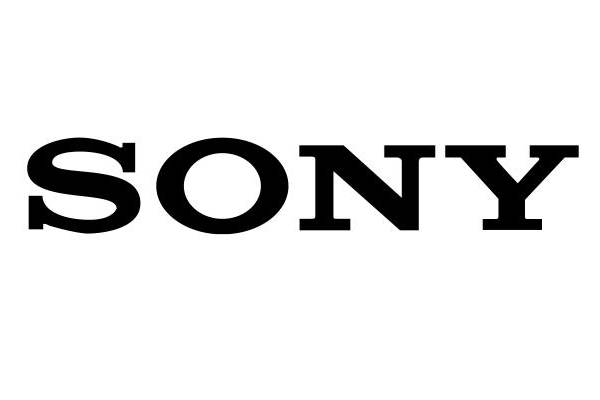Sony Semiconductor Solutions Corporation today announced the upcoming release of the IMX459 stacked SPAD depth sensor for automotive LiDAR applications using direct Time-of-Flight (dToF) method, an industry first.*1
This product packs the tiny, 10 μm square single-photon avalanche diode (SPAD) pixels*2 and distance measuring processing circuit onto a single chip, making for a compact 1/2.9-type form factor delivering high-precision, high-speed distance measurement.
The new sensor helps contribute to safe, secure future mobility by improving automotive LiDAR detection and recognition performance required with the popularization of advanced driver assistance systems (ADAS) and autonomous driving (AD).
*1:As a stacked SPAD depth sensor for automotive LiDAR applications. As of announcement on September 6, 2021.
*2: A pixel structure that uses avalanche multiplication to amplify electrons from a single incident photon, causing a cascade like an avalanche.![]()
IMX459 SPAD ToF depth sensor for automotive LiDAR applications
| Model name | Sample shipment date (planned) | Sample price (including tax) |
|---|---|---|
| IMX459 1/2.9-type (6.25 mm diagonal) approx. 100,000 effective-pixel*3 SPAD ToF depth sensor for automotive LiDAR applications | March 2022 | 15,000 yen |
*3: Based on image sensor effective pixel specification method.
In addition to sensing devices such as automotive cameras and millimeter wave radar, LiDAR is becoming ever more important as a method of high-precision detection and recognition of road conditions, and the location and shape of objects such as cars and pedestrians. Meanwhile, in order for LiDAR to grow and permeate the market, technical hurdles remain, including needs for further improvements in distance measuring performance, delivery of greater safety and reliability regardless of the usage environment and conditions, and shifting to a solid-state*4 design to achieve a more compact form and lower cost. There are various initiatives underway to address these challenges.
Out of various methods used for LiDAR distance measurement, SPAD pixels are used as a type of detector in a dToF sensor, which measures the distance to an object by detecting the time of flight (time difference) of light emitted from a source until it returns to the sensor after being reflected by the object. By leveraging Sony’s technologies such as a back-illuminated pixel structure, stacked configurations, and Cu-Cu connections*5 created in the development of CMOS image sensors, Sony has succeeded in a unique device construction that includes SPAD pixels and distance measuring processing circuit on a single chip. This design helps achieve a tiny, 10 μm square pixel size, allowing for a compact form and high-resolution of approximately 100,000 effective pixels on a 1/2.9 type format. It also delivers enhanced photon detection efficiency and improved responsiveness, enabling high-speed, high-precision distance measuring at 15-centimeter range resolutions from long-range to short -range distances. The product complies with functional safety standards for automobile applications, which help improve LiDAR reliability, and the single chip construction contributes to more compact, low-cost LiDAR.
*4: Electronic components and devices with no mechanical moving parts that utilize semiconductor technology.
*5: Technology that provides electrical continuity via connected Cu (copper) pads when stacking the pixel section (top chip) and logic circuits (bottom chip). Compared with through-silicon via (TSV) wiring, where the connection is achieved by electrodes intruded around the circumference of the pixel area, this method gives more freedom in design, improves productivity, allows for a more compact size, and increases performance.https://www.youtube.com/embed/IV7rr2mGwGI
Main Features
■High-speed, high-precision distance measuring performance thanks to a stacked configuration with both 10 μm square SPAD pixels and distance measuring processing circuit
This product employs a stacked configuration, where a Cu-Cu connection is used to achieve conduction for each pixel between the back-illuminated SPAD pixel chip (top) and the logic chip equipped with distance measuring processing circuit (bottom). This allows for a configuration with circuit placed on the bottom of the pixel chip, maintaining a high aperture ratio*6 while resulting in a small 10 μm square pixel size. The product also employs a light incidence plane with irregularities on its surface to refract incident light, thereby enhancing the absorption rate. These features result in a high 24% photon detection efficiency in the 905 nm wavelength commonly used in automotive LiDAR laser light sources. For example, it is possible to detect far-off objects with a low reflection rate at high resolution and distance resolution. Additionally, an active recharge circuit is included on the circuit section, which comes with a Cu-Cu connection for each pixel, allowing for a response speed that is approximately 6 nanoseconds*7 at normal operation for each photon.
This unique stacked construction enables high-speed, high-precision distance measuring at 15-centimeter range resolutions from long-range to short -range distances, thereby contributing to improved automotive LiDAR detection and recognition performance.
*6: Ratio of aperture section (section other than light-blocking sections) as viewed from the light incident side per pixel
*7: In a temperature environment of 85 °C.
 SPAD ToF depth sensor stacked configuration
SPAD ToF depth sensor stacked configuration
(Top: SPAD pixels, bottom: distance measuring processing circuit) Imaging example (point cloud)
Imaging example (point cloud)
■Complying with functional safety standards for automobile applications helps improve LiDAR reliability
This product is set to be certified as meeting the requirements of the AEC-Q100 Grade 2 automotive electronic component reliability tests. Sony has also introduced a development process that complies with ISO 26262 automobile functional safety standards and supports functional safety requirement level ASIL- B(D) for functionalities such as failure detection, notification, and control. All this will contribute to improved LiDAR reliability.
| Model name | IMX459 | |
|---|---|---|
| Effective pixels | 597 x 168 pixels (H x V), approx. 100,000 pixels | |
| Image size | Diagonal 6.25 mm (1/2.9-type) | |
| Recommended light source wavelength | 905 nm | |
| SPAD unit cell size | 10.08 μm x 10.08 μm (H x V) | |
| Element size (ToF pixel unit) | 3 x 3 (H x V) | |
| Photon detection efficiency | 24% | |
| Response speed | Approx. 6 ns | |
| Power supply | SPAD breakdown voltage | -20.5V |
| SPAD excess voltage | 3.3V | |
| Analog | 3.3V | |
| Digital | 1.1V | |
| Interface | 1.8V | |
| Interface | MIPI CSI-2 serial output (4 lane / 2 lane) | |
| Package | 152-pin plastic BGA | |
| Package size | 15.65 mm x 15.35 mm (H x V) | |
| Max. detection distance | 300 m | |
| Distance precision at 300 m | 3 x 3 pixels (H x V) additive mode: 30 cm 6 x 6 pixels (H x V) additive mode: 15 cm |
Mechanical scanning LiDAR reference design
Sony has also developed a mechanical scanning*8 LiDAR reference design equipped with this new product, which is now being offered to customers and partners. Providing the design will help customers and partners save on man-hours in the LiDAR development process as well as reduce costs by optimizing device selection.
※8: A method that provides horizontal scanning of a laser emitted from a laser diode by rotating a polygon mirror at high speeds.![]()
Mechanical scanning LiDAR reference design







